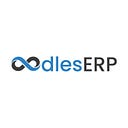The Multi-Cloud Strategy For Legacy Application Modernization
Several variables contribute to the inescapable requirement for application modernisation at some time when operating a firm. As the company expands, keeping up with the most recent technical developments and market trends becomes crucial. In the years to come, the technologies we use now will inevitably become obsolete. Having said that, it is crucial to stay up with the quickly changing technological landscape in order to successfully manage a firm in any industry. For instance, because of the perceived advantages that cloud and SaaS-based apps have over on-premise systems, more and more organisations are adopting them.
Modernizing legacy applications is essential to avoid missing out on significant technological advancements. It enables you to acquire a competitive advantage in the market and aids in your ability to endure the fierce competition. More importantly, it is crucial to resolve any operational difficulties that may result from problems with the majority of legacy programmes.
Here, we’ll go over the key advantages of modernising older applications with a multi-cloud approach. Let’s first examine the importance of the multi-cloud approach for the modernization of old applications.
Also, Read Application Modernization Strategy For The Post-COVID World
The Multi-Cloud Strategy: Why Does It Matter?
The hybrid and multi-cloud approaches are currently gaining acceptance on a global scale. 81 percent of businesses, according to TechJury, either already have a multi-cloud strategy in place or are working on one. According to a thorough survey carried out by ParkMyCloud, 74% of the respondents said they have profited from a multi-cloud strategy. What is a multi-cloud strategy, is the issue that needs to be asked in this situation.
The use of numerous cloud environments for simultaneous deployment is referred to as multi-cloud. In this situation, a multi-cloud approach often entails the deployment of public, private, and hybrid clouds. Businesses can build a solid SaaS architecture and integrate it with their legacy applications by implementing a multi-cloud strategy. Modernization becomes quick and effective once your old software infrastructure is in a multi-cloud environment.
Benefits of Legacy Modernization Using Multi-Cloud
The key advantages of modernising old applications utilising a multi-cloud architecture are listed below.
Ample Options In The Market
The good news is that there are many cloud solutions available in the market when choosing the multi-cloud strategy. You can examine every choice and decide which is best for your company because you’ll be choosing numerous vendors or cloud providers. Many aspects, including upload speed, market reputation, pricing, and more, are taken into account when choosing a cloud service. More importantly, you don’t have to rely on a single cloud service provider because you have the option to access several cloud platforms.
Optimal Performance
Businesses may build and construct a reliable, fast, and low-latency software infrastructure that is simple to grow thanks to the multi-cloud strategy. It simultaneously makes workflows nimble and enhances workload mobility to support consistent management of various cloud platforms regardless of their heterogeneity.
Also, Read Legacy System Modernization: Making Your Enterprise Systems Future-Ready
Better Risk Management
Improved support for disaster recovery and risk management is yet another advantage of modernising outdated applications utilising a multi-cloud approach. Since you rely on various cloud service providers, the multi-cloud architecture considerably reduces the instances of server downtime. For instance, you might easily switch to a different cloud service if one of your cloud providers experiences a server outage or infrastructure failure. Additionally, you have stronger backup and recovery support, reducing the likelihood of data loss.
Competitive Pricing
You can significantly reduce your overall running costs by using the multi-cloud method for legacy modernization. For their cloud solutions, most cloud service providers use a pay-as-you-go pricing model. It implies that you only need to pay for the services you actually use. Having said that, a multi-cloud strategy allows you to choose from a variety of cloud providers after carefully examining a number of variables, including their monthly/weekly pricing. It gives you greater flexibility and results in significant cost savings because you are no longer restricted by the pricing practises of a single vendor.
You may also be interested in reading Cloud ERP Development To Enhance Business Process Efficiency
The Final Verdict
Using the multi-cloud approach to modernise or re-architect legacy software programmes has a number of advantages. Here, we’ve covered the key benefits that businesses may get from using a multi-cloud approach to modernise their legacy applications. To reap the greatest rewards, you must have the appropriate experience on your side. So, to get off on the right foot, the first step should be to ask for help from a trustworthy technological partner.
With an emphasis on boosting business efficiency through scalable software solutions, Oodles ERP offers end-to-end SaaS development services. Our development team specialises in offering comprehensive services for modernising outdated apps and moving software to a SaaS architecture. To create value-driven solutions for various business demands, we combine the most recent tech stack with fault-tolerant software upgrading techniques. Additionally, we offer individualised software consulting services to assist you in getting the most out of modernising your current software infrastructure. Write to us at erp@oodles.io for more information about our application modernisation services.
